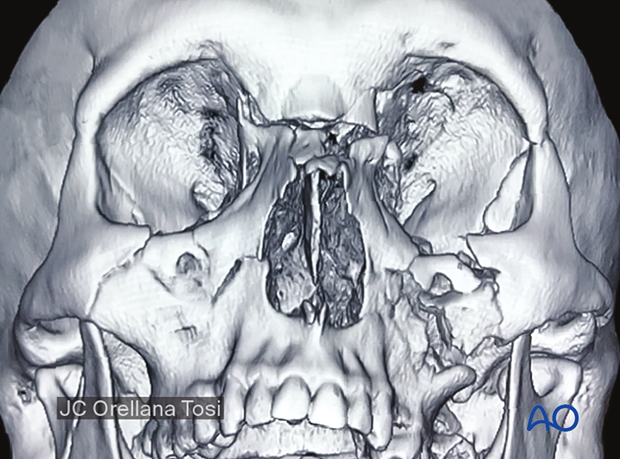Orbit, combined fractures
Definition
A frequent orbital fracture pattern involves a combination of medial wall and floor fractures. This is a significant fracture, leading to both functional and esthetic sequelae.
Clinical diagnosis is based on a meticulous examination of the eye and the adnexa, including the patient’s vision and palpation of the orbital rims.
Since the advent of CT imaging, the surgeon can better define fractures, the degree of fracture displacement, and the necessity for fracture reduction. CTs should be obtained in the axial coronal planes and sagittal views such as those obtained in the longitudinal axis of the optic nerve.
The complexity of an orbital fracture is defined by the combination of its anterior-posterior and mediolateral extensions. This complexity is not visible on plain films. Therefore, proper diagnosis and treatment should be based on voxel-based datasets (CT, cone beam).
Intra-/periorbital air is a common feature of an orbital wall fracture, which appears clinically as emphysema (independent of whether the injury was penetrating or nonpenetrating).
The most widely available technology is CT scanning, which has the advantage of combined hard- and soft-tissue visualization. Cone beam technology is becoming increasingly popular, although only hard tissues can be reliably assessed. MRI is limited to soft-tissue visualization and provides only indirect information on hard tissues. It is rarely obtained for specialized evaluation of orbital soft tissue.
In some cases, it is difficult to appreciate the fracture's full extent, morphology, and quality from the CT scan alone. In very complex cases, a complete understanding of the fracture is obtained only after surgical exposure.
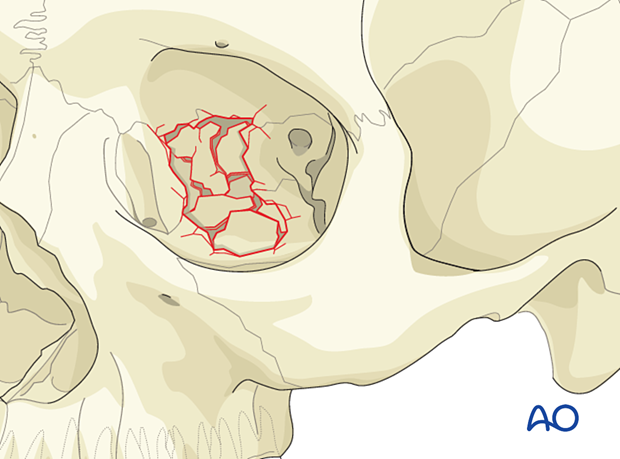
Radiographic findings
Coronal slices (hard-tissue window) of combined right medial orbital wall and orbital floor fractures.
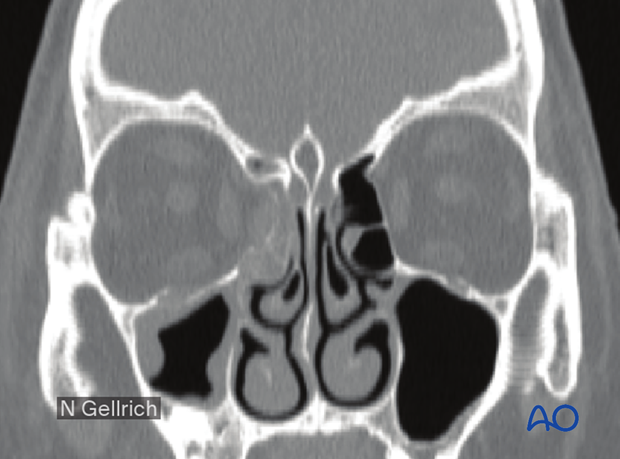
Coronal slices (soft-tissue window) of combined right medial orbital wall and orbital floor fractures.
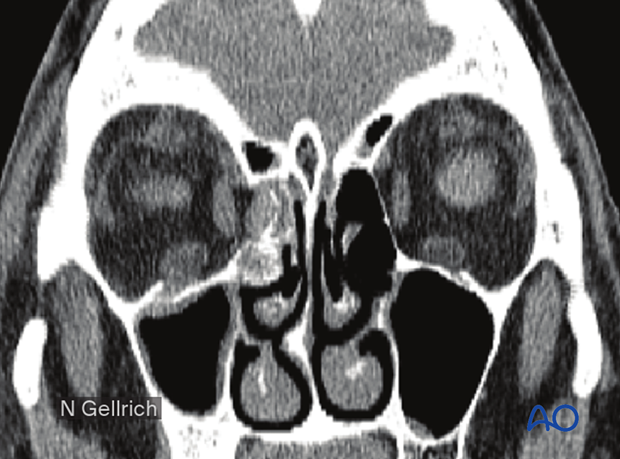
Sagittal slices (soft-tissue window) of the same patient.
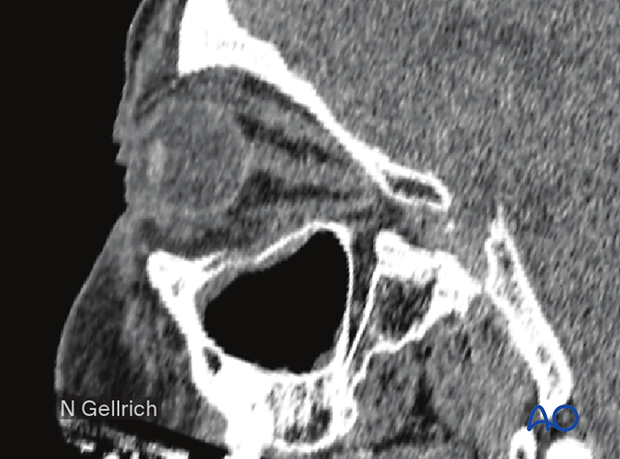
Axial slices (soft-tissue window) of the same patient.
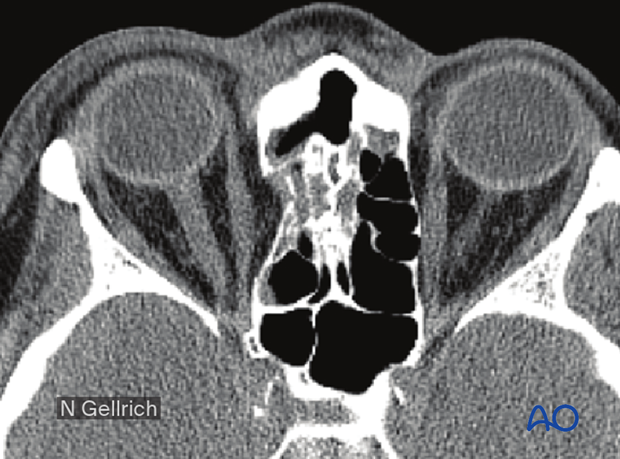
3D reconstruction of a patient presenting with severe comminution of the medial wall and the floor of the orbit accompanying a Le Fort III and NOE fracture. Complex cases like this require sophisticated reconstruction.
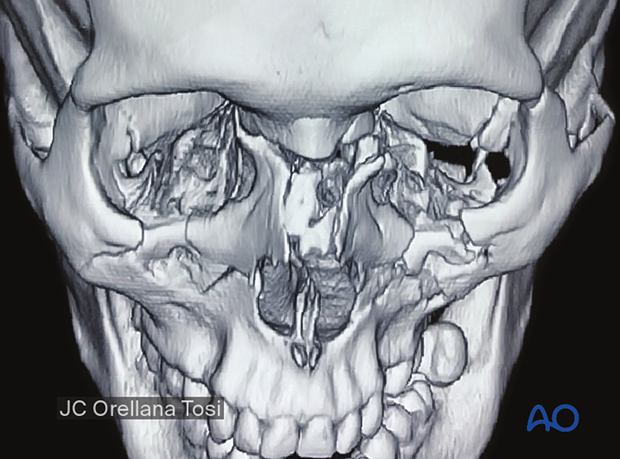
3D CT of a patient presenting with severe comminution of the medial wall and the floor of the orbit accompanying NOE and Le Fort III fractures.
Note the displacement of the orbital floor, bone loss, and the significant displacement of a fragment of the medial wall.
Complex cases like this require multiple exposures and significant reconstruction to restore the pre-morbid anatomy and volume of the internal orbit.
